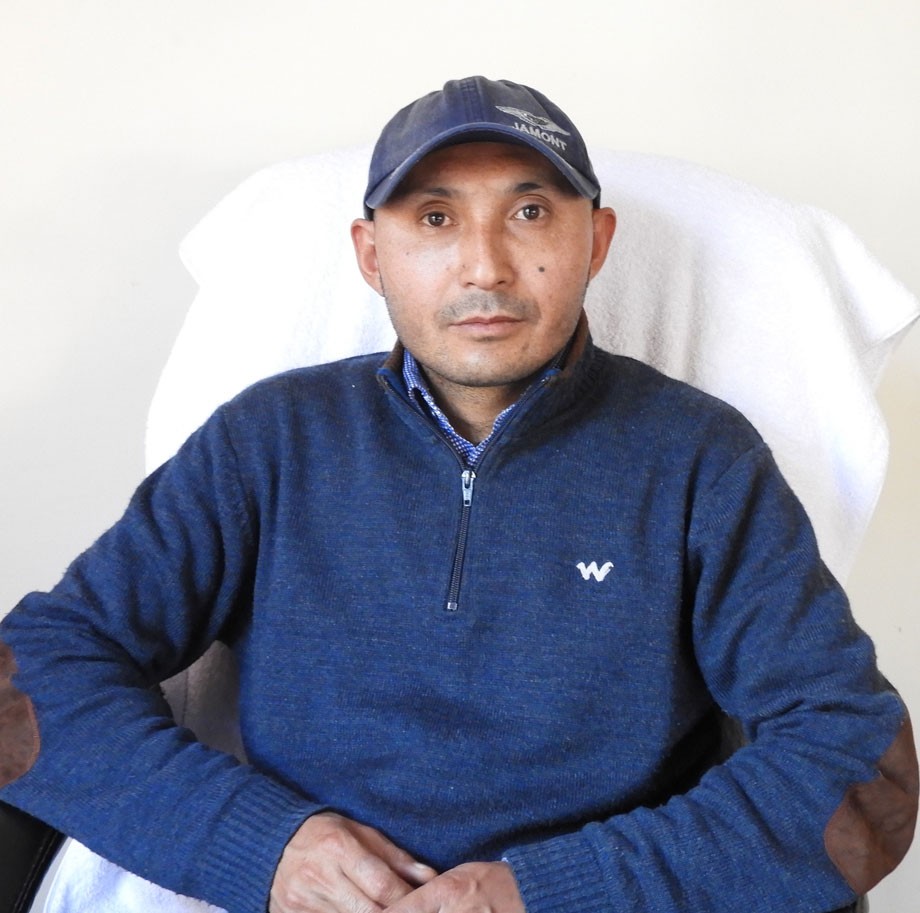In Conversation with Zakir Hussain, KAS, District Panchayat Officer

Q. Brief us about the Panchayati Raj system in Ladakh. What are the role, powers, and functions of the Block Development Council?
Panchayati Raj system in Ladakh is formed as per J&K Panchayati Raj Act 1989 and Rule 2 (1) of J&K Panchayati Raj rules, 1996. In Leh district we have 95 Panchayat Halqas.
The Jammu & Kashmir Panchayati Raj Act 1989 provides a three-tier structure with Halqa Panchayat (HP) at the grassroots, Block Development Council (BDC) at every block and the District Planning and Development Board (DPDB) at the district level. In the case of Ladakh, Hill Council acts as the District Planning and Development Board (DPDB) or Zilla Parishad- the third tier. The second tier, Block Development Council was not in existence till now. The election for the same will be held in the whole J&K for the first time on October 24.
The Block Development Council has its importance in the Panchayat system. Their function is to construct, maintain and supervise Inter-Halqa Panchayat Communication System, thus bridging the gap between every halqas and its members. It will guide Halqa Panchayats administratively and technically, and can also review their work. They will supervise plans relating to agriculture, rural development, animal husbandry/sheep husbandry, social forestry, education, and public health, cross-check eligible beneficiaries of different schemes, undertake measures for effective supervision and monitoring of various developmental programmes and many more. The Gram Panchayat Developmental plan will be consolidated at the Panchayat level to the respective block where the BDC Chairman will check and approve further at District Development Board.
Q. How important is the role of Block Development Council chairpersons?
Every Block Development Council will have a chairperson who will be elected among the Sarpanches or Panches of any Halqa Panchayat falling within the block. The chairman of the Block Development Council will have Block Development Officer as his secretary. They will also become the ex-officio members in the Hill Council and the Councillor of the respective block will be an ex-officio of the Block Development Council.
Q. Tell us about the preparation and election process of the Block Development Council to be held on October 24, 2019.
The election process of the Block Development council including preparation of electoral rolls, filing of claims and objection and the final electoral rolls was initiated in September. In Leh district, we have 16 blocks, 652 Panch and 92 Sarpanch. On September 23 we finalized the electoral roll and the total voter is 744. The Election Authority has also appointed Electoral Registration Officers (EROs) and Assistant Electoral Registration Officers (AEROs). District Panchayat Officer (DPO) of every district will be the Electoral Registration Officer while the BDOs of every block will be Assistant Electoral Registration Officer of the concerned Block Development Council. There will be 16 polling stations.
According to the notification, the dates for the election process are as follows:
|
October 1 to 9 |
Filing of the nomination |
|
October 10 |
Scrutiny of the nomination |
|
October 11 |
Withdrawal of the nomination |
|
October 24 |
Polling (9am to 1 pm) and Counting at 3pm |
Q. How many Panches and Sarpanches are eligible to vote and contest for the post of Block Development Council chairpersons? Is there any reservation?
Not everyone can cast the vote or contest in the Block Development Council election. The chairperson of the BDC is elected by the Electoral College comprising panches and sarpanches of the panchayats falling within the block. We have a total of 744 voters including 496 male and 248 female voters. Also, reservation for SC/ST and Women has been made. This time women reservation is notified in five blocks including Chuchot, Khaltse, Nimoo, Rupsho, Singay Lalok.
Q. How important it is to strengthen the Panchayati Raj system? Reason
Panchayati Raj system is a rural local self-governance which promotes democracy at the grass-root level. It is in charge of all developmental work in the villages. Various developmental plans and projects will be successful if people are taken into confidence. It will be very difficult for an officer to understand every village level need. Thus, the Panchayati raj system plays an incredible role in understanding the demands, needs, and aspirations of the villagers and also the areas to be focused on. Through different ward level meetings and gram sabhas, the voices of the people are heard.
It is very important for further strengthening of Panchayati Raj because it has the potential to empower the most marginalized sections of our society.
Q. Tell us about the relation of Hill Council and Panchayati Raj institution. Will there be any hiccups in the smooth functioning of both the bodies?
Hill Council acts as District Planning and Development Board (DPDB) or Zilla Parishad because of which there will be no issues in the functioning of both the bodies.
Message to the readers
“I urge people of every village to take active participation and take part in all the decision-making process, thus making the Panchayat system strong and to bring development.”





